INTERVIEW
Full Immersion
WITH NATHANIEL MULLINS
AN INTERVIEW WITH NATHANIEL MULLINS
“Stripping away all fear and bringing a genuine curiosity can break down any walls or communication barriers.”
Nathaniel Mullins won 1st Prize in our recent Portraits competition with a stunning portrait of a member of the Dust Shaker clan in Papua New Guinea, which judge Joakim Eskildsen praised for holding “a mysterious layer that keeps it alive long after we see it.”
Keen to learn more about the shot, how Nathaniel got to visit this clan, how one manages the ethical and sustainable considerations of this type of photography, and of course how he found himself exploring this type of photography in the first place, we put some questions to him…
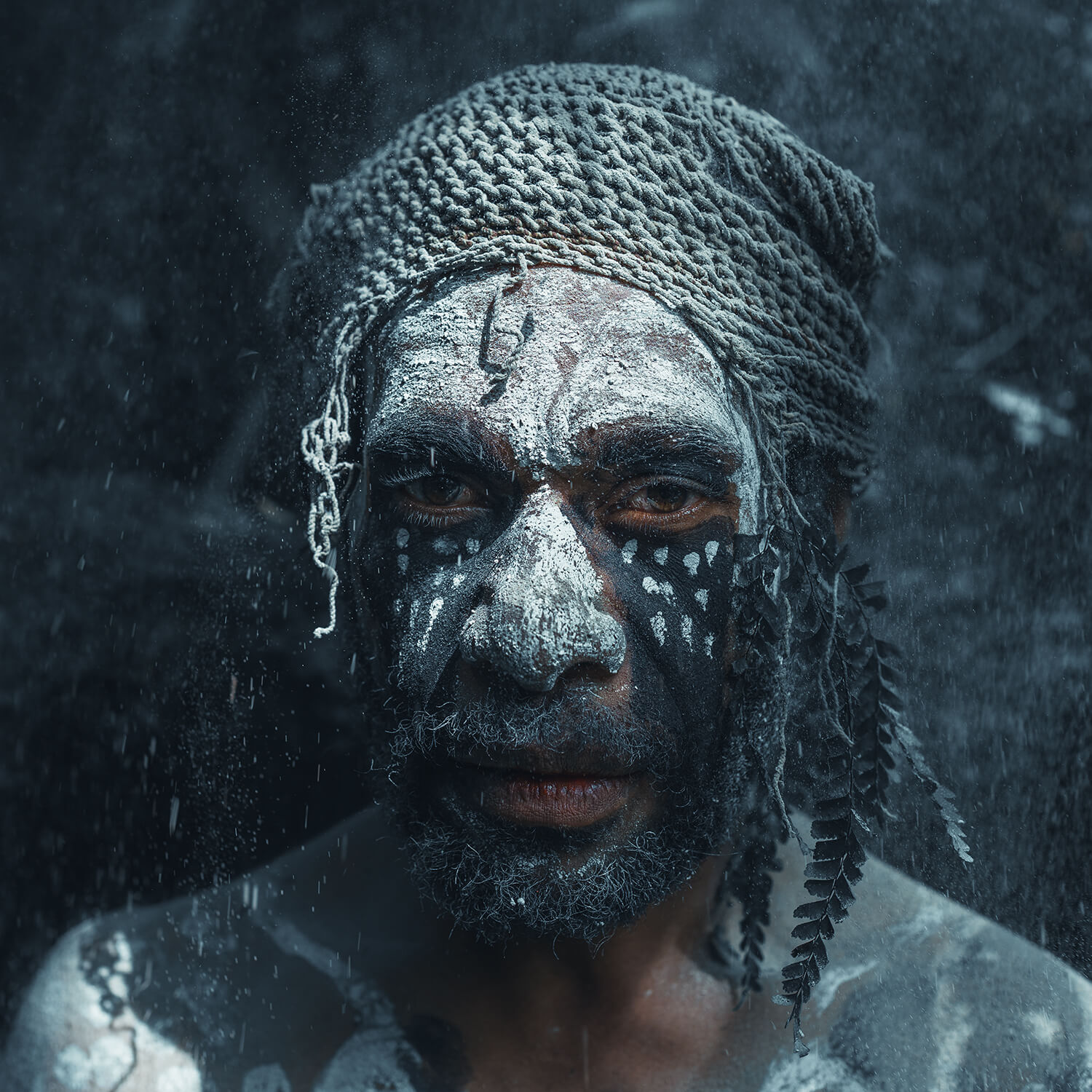
NATHANIEL’S WINNING PORTRAITS IMAGE
A MEMBER OF THE DUST SHAKER CLAN, PAPUA NEW GUINEA
Nathaniel, congratulations on winning our Portraits competition! Please introduce yourself in a few words…
Thank you, so much. My name is Nathaniel Mullins, and I am a photographer, videographer, and collector of rare experiences. I am a former professional drummer and now spend most of my time exploring the world visiting both remote and cosmopolitan locations. I fell in love, or perhaps became obsessed, with travel while touring and now it’s that adventure that fuels my art.
How would you describe the role photography plays in your life, and the style
you’ve developed over time?
I traded drumsticks for a camera, and I feel a sense of purpose when I am holding either. The photography style I have developed over time, mirrors that of how I spoke with my drumming; Intimate, vulnerable, sometimes dark, raw, and always authentic.
Can you tell us a little more about your winning shot and the circumstances behind it?
The moment captured in this shot took place in Mindima Village of Papua New Guinea. Deep in the Highlands jungle, this man is a member of the Narku Tribe and was performing the “Dust Shaker” ritual.
As a guest of the tribe, I was able to privately witness their performance. This unique tradition is for widows and widowers that are ready to open themselves back to courtship. The symbolism is quite literal. They sing and dance with ashes tucked into their headdresses and then in unison, they nod their heads quickly to shake ashes into the air. This is a beautiful way to move forward and still honor their past.
Joy after loss is something I struggle with, and bearing witness to the members of this tribe having the same experience made me feel connected and less alone. I took many photos trying to capture the plethora of emotions being shared. While these are performances, you can feel the intense connection it brings them with each other and with their ancestors.
Lighting can be quite challenging in the jungle, and I use a very simple set up with no artificial lights. The tribe members were incredibly gracious and once I established trust, I was able to find us the perfect spot for this photo.
It’s a phenomenal experience to have had. How did the trip come about?
I have always had an interest in anthropology and immersing myself in cultures, so I try to accomplish this through sustainable tourism. Years ago, I became acquaintances with an anthropologist based in Finland who helps me connect with different indigenous groups including those in Africa and the Arctic. She reached out to me and asked if I was interested in visiting the tribes of Papua New Guinea, which my answer was an emphatic “yes.” Due to visa issues, I had to cancel my first attempt, and a year later, I was successful!
There’s a risk that this kind of work, photographing remote tribes, can feel invasive or voyeuristic. Was that something you were conscious of? How did you go about ensuring it was a respectful experience?
There is most certainly a risk to this work, and additional challenges, when done ethically and sustainably. First, I always ensure I have a translator to ask permission for filming and photographing. One of the riskier things I do is travel alone. I do not have a crew or a travel partner, so I am flying solo for these experiences. Being a solo traveler helps to demonstrate a legitimate interest, eliminating an invasive energy. I find it paramount to bring my authentic self and connect to the tribe members human to human. Stripping away all fear and bringing a genuine curiosity can break down any walls or communication barriers. Most importantly, I participate at any opportunity they give me, even if it makes uncomfortable or possibly sick. These are not shoots, they are shared experiences.
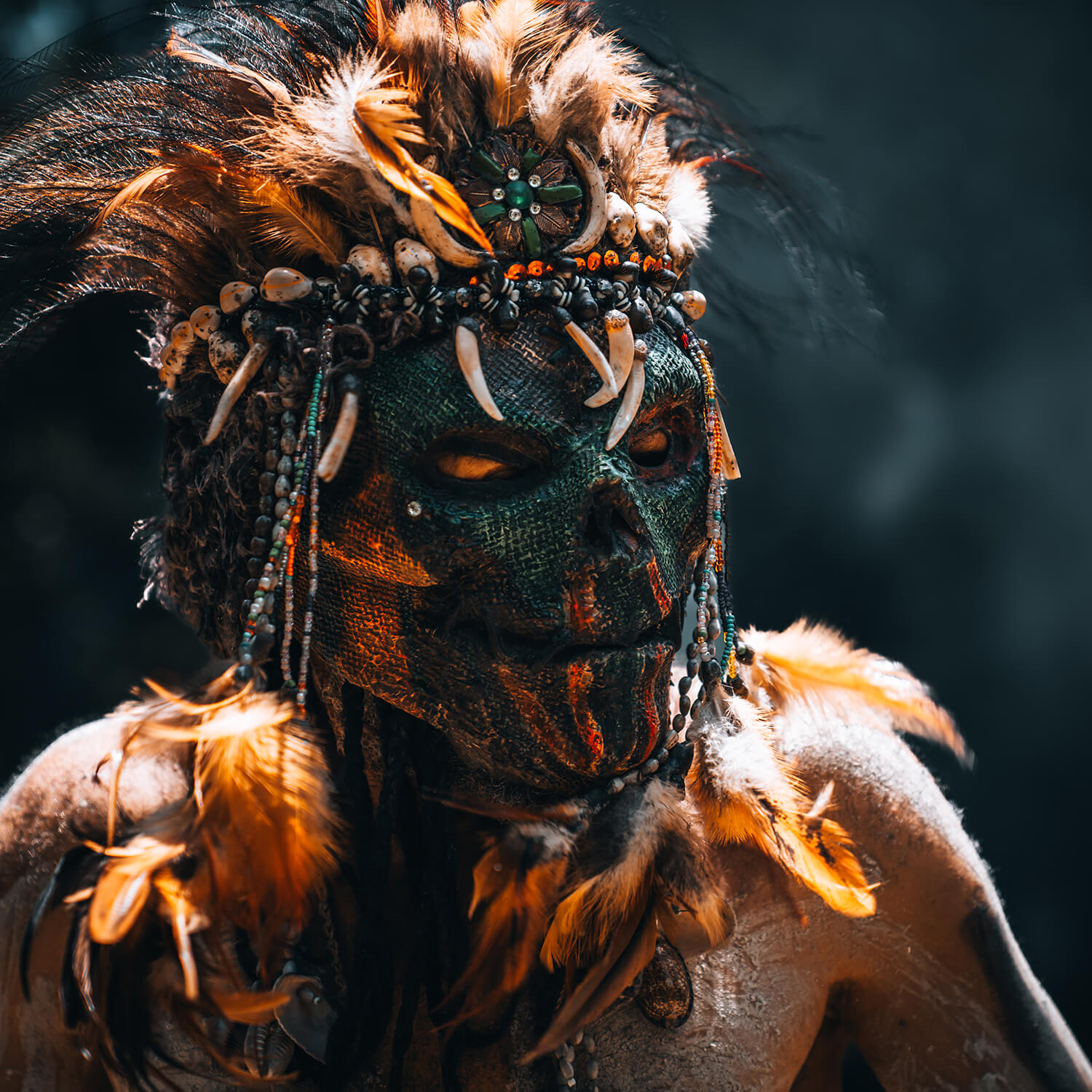
MOKU MOKU CEREMONY, ASARO MUDMEN TRIBE MEMBER, PAPUA NEW GUINEA
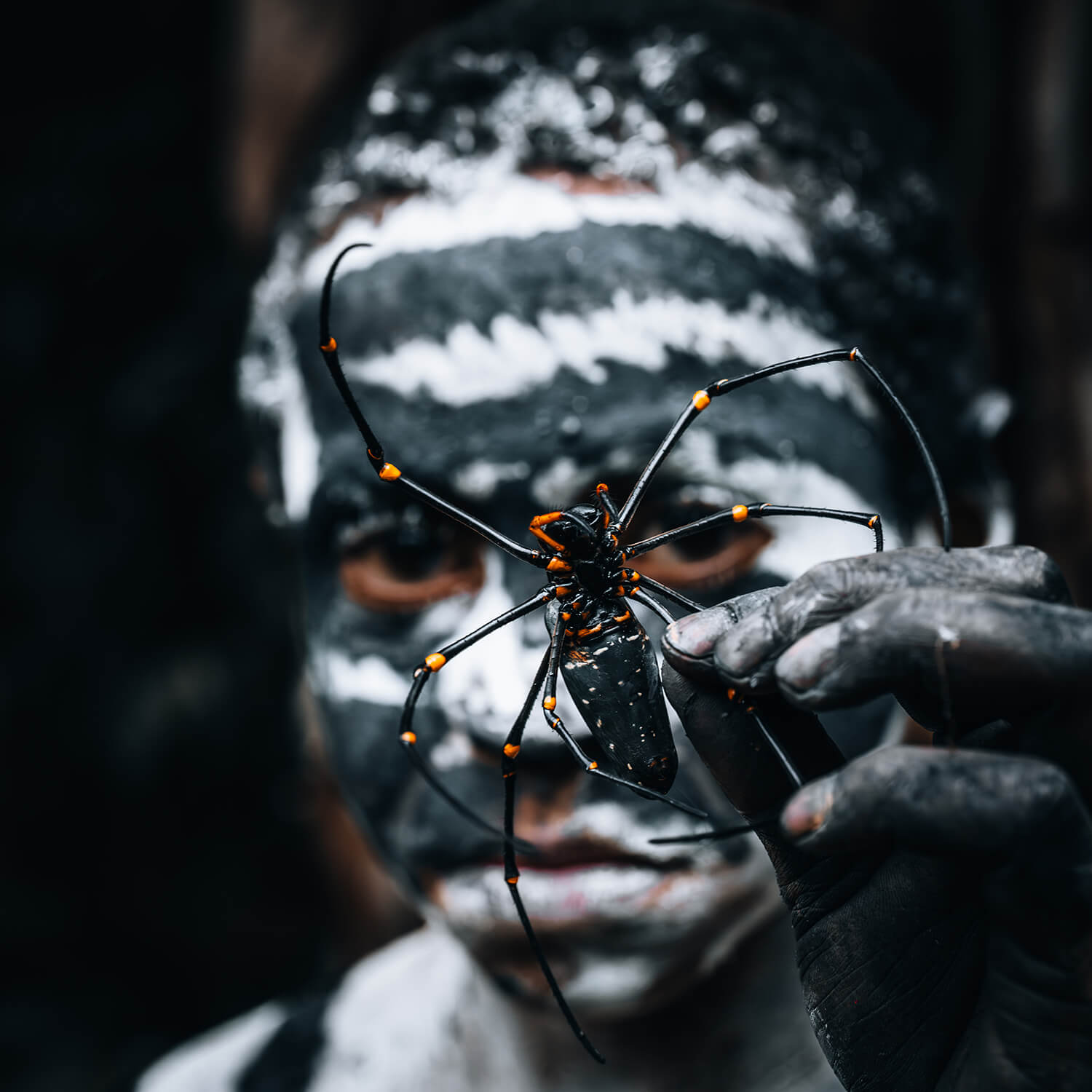
A YOUNG MEMBER OF THE INSECT HUNTERS OF MINDIMA, PAPUA NEW GUINEA
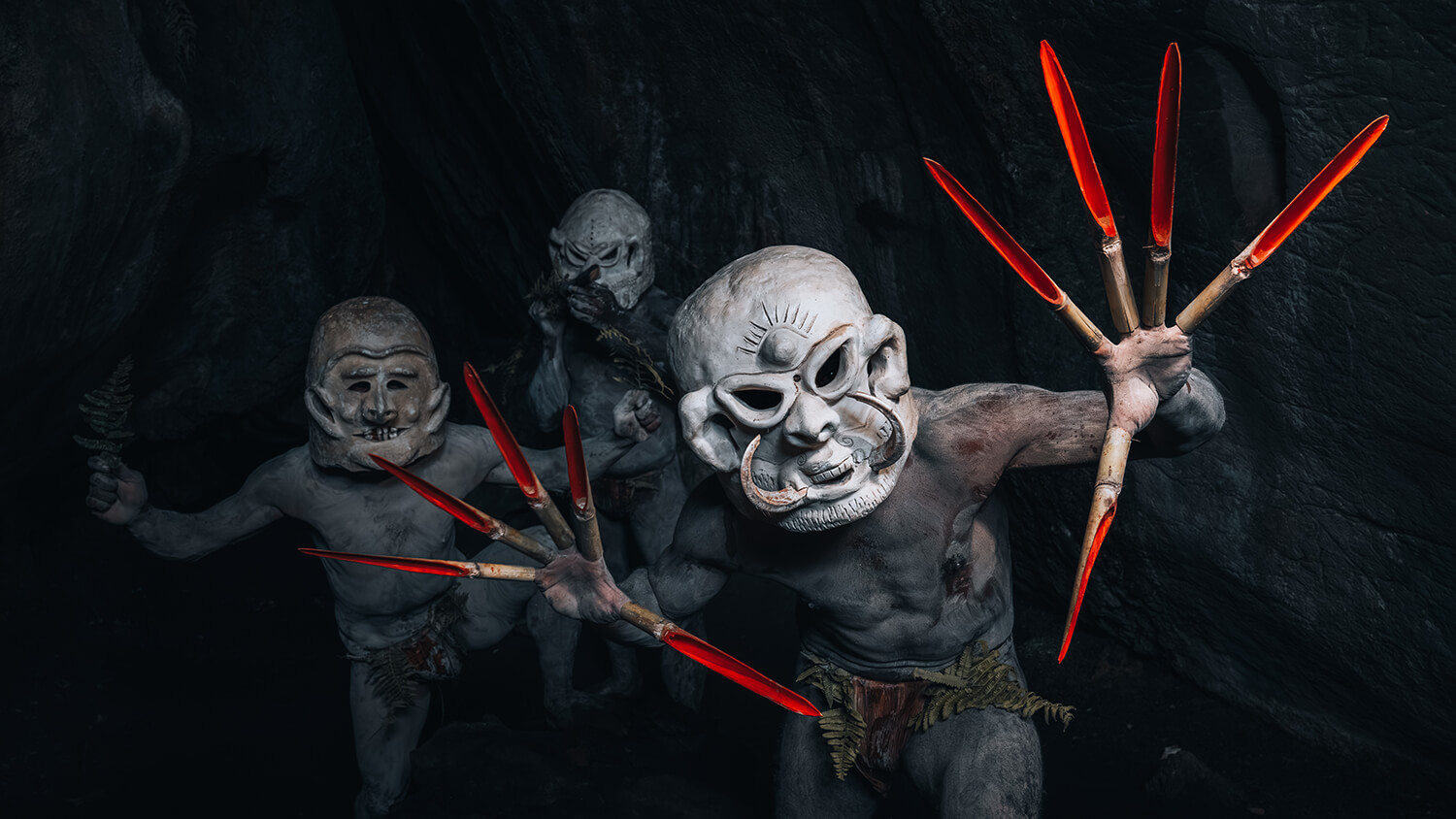
ASARO MUDMEN TRIBE MEMBERS, PAPUA NEW GUINEA
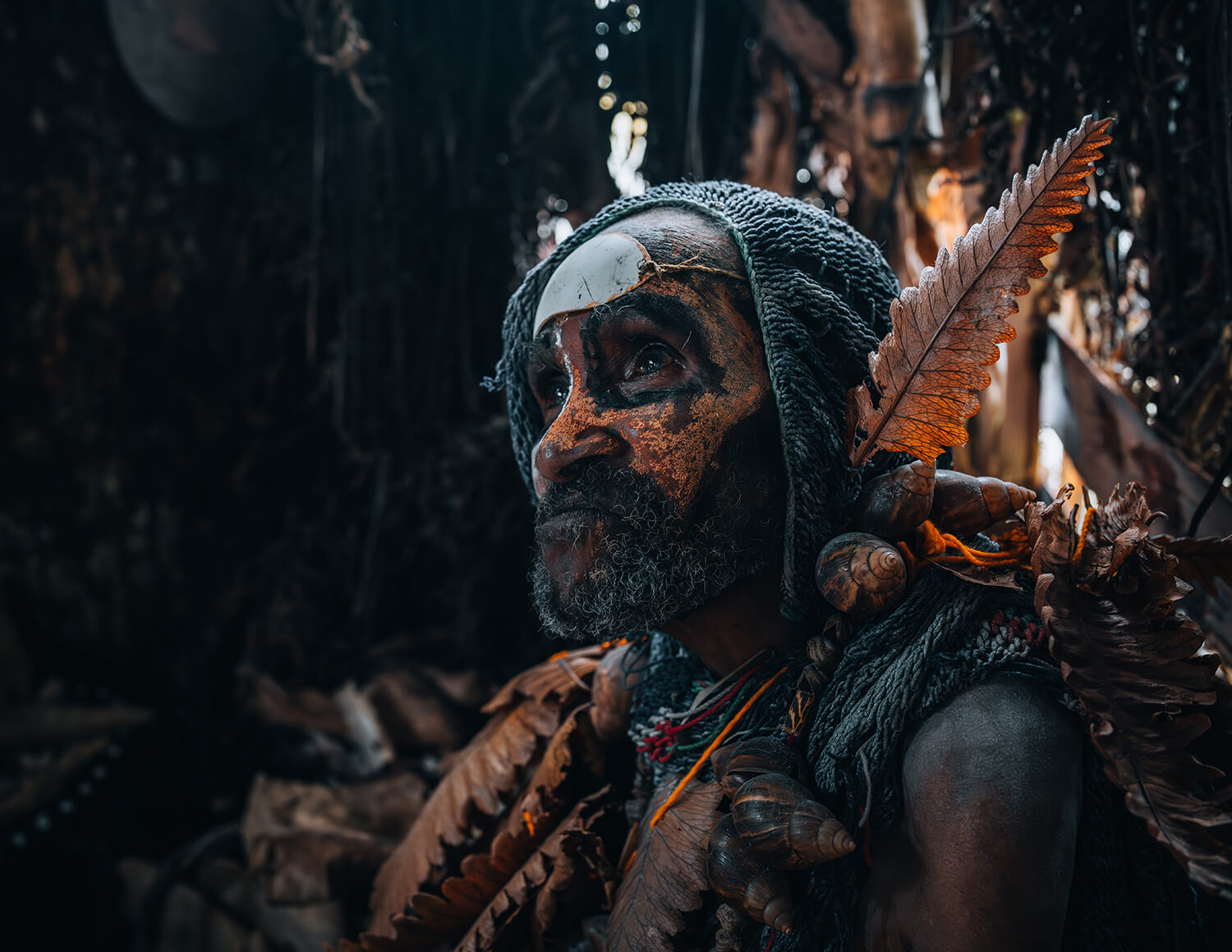
TRIBAL SORCERER, KAMUN YOMBGLO TRIBE, PAPUA NEW GUINEA
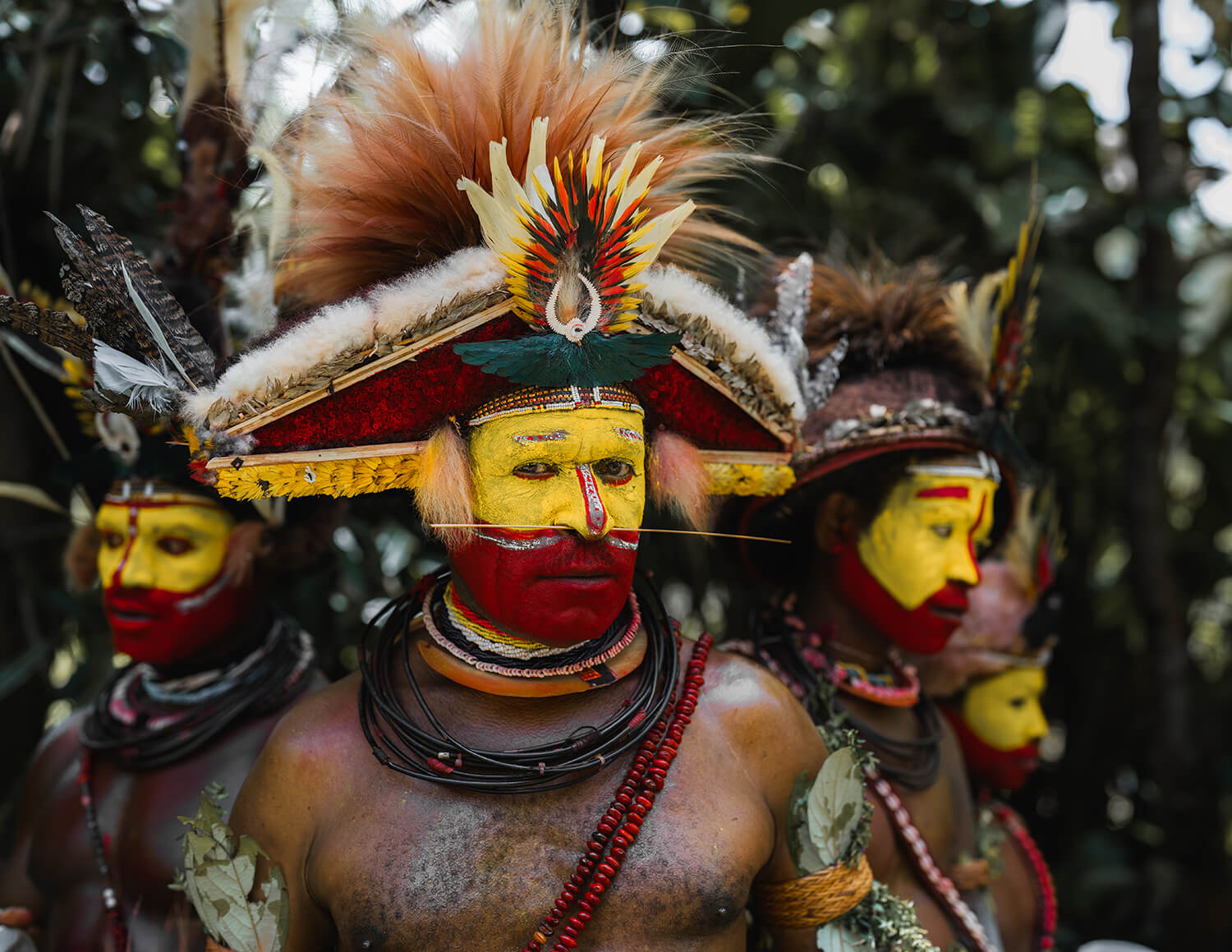
HULI WIGMEN, PAPUA NEW GUINEA
And I understand that you’re now documenting the work in a photobook, with your writings alongside the images. How is that experience? And as someone very experienced with photography and video, does the process of putting a book together create a new set of challenges?
I am, yes! This is something I am incredibly excited about. The experience has presented a whole new set of challenges and therefore opportunities to expand my creative output. With a book, I can offer experiential and educational context behind the photos, with a side of edgy humor. I find that I must purposefully set dedicated time aside for this long-term creative piece. That is probably the biggest difference from photo and video; the time from start to completion. The average time to write a book is 6 months to 2 years. This kind of timeline is so foreign, and I am taking advantage of my video documentation to help with recollection. I accept this challenge and hope to have the book finished in the next 6 months. The tribes of Papua New Guinea evoke much curiosity as most people are unfamiliar with their culture, and I look forward to being able to share even just a part of their story with world through this book.
On the subject of video, you have an established YouTube channel, where you’ve vlogged on trips to Iceland, Hong Kong, Argentina, Tanzania and many more. Did photography or video come first, and how do you intertwine the two?
I have always enjoyed taking both photos and videos to document my travels, and my first vlogs were just in the form if Instagram stories. That is when I upgraded to professional video equipment. So, I would say video came first.
As I gained familiarity with the gear I purchased, I became more comfortable with manual settings for photography. I bought my first professional quality lens, and it was game over. I was now a dedicated photographer.
I have begun to integrate the two through content about my photography trips, locations, or how-to tips. If the video is not photography focused, I always include photographs from the travels. I think this adds a fun behind-the-scenes type of experience for the audience to see a location or subject on video and then what the photographer sees through their lens is impactful.
Do you have a bucket list location or experience?
A bucket list location for me would be photographing Polar Bears and the Inupiat Eskimo village of Kaktovik in Alaska. It would be a dream to document the bears, the Inupiat Eskimo culture, and their relationship.

NATHANIEL’S FAVORITE SHOT, BWINDI IMPENETRABLE FOREST, UGANDA
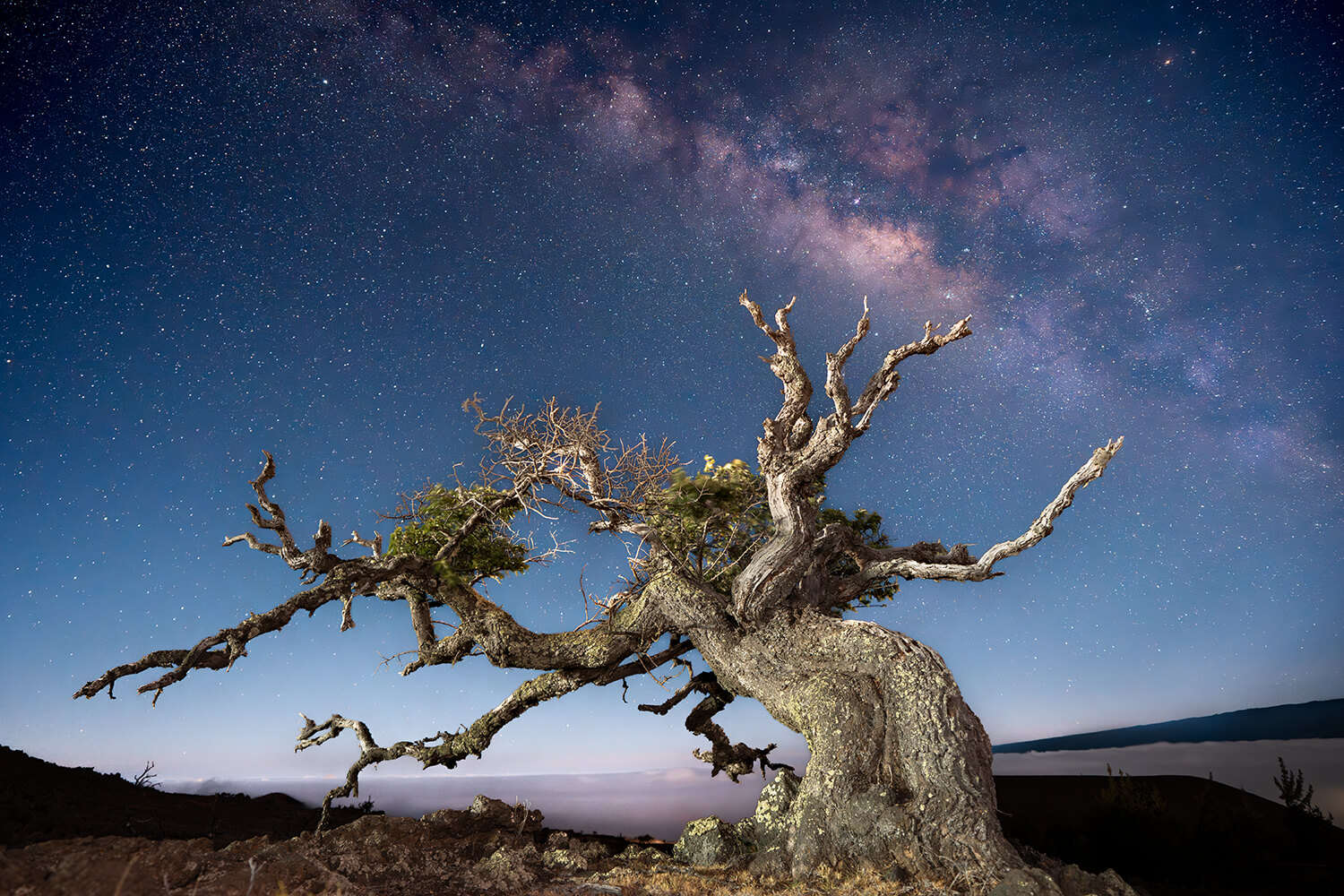
MAUNA KEA MILKY WAY, HAWAII, US
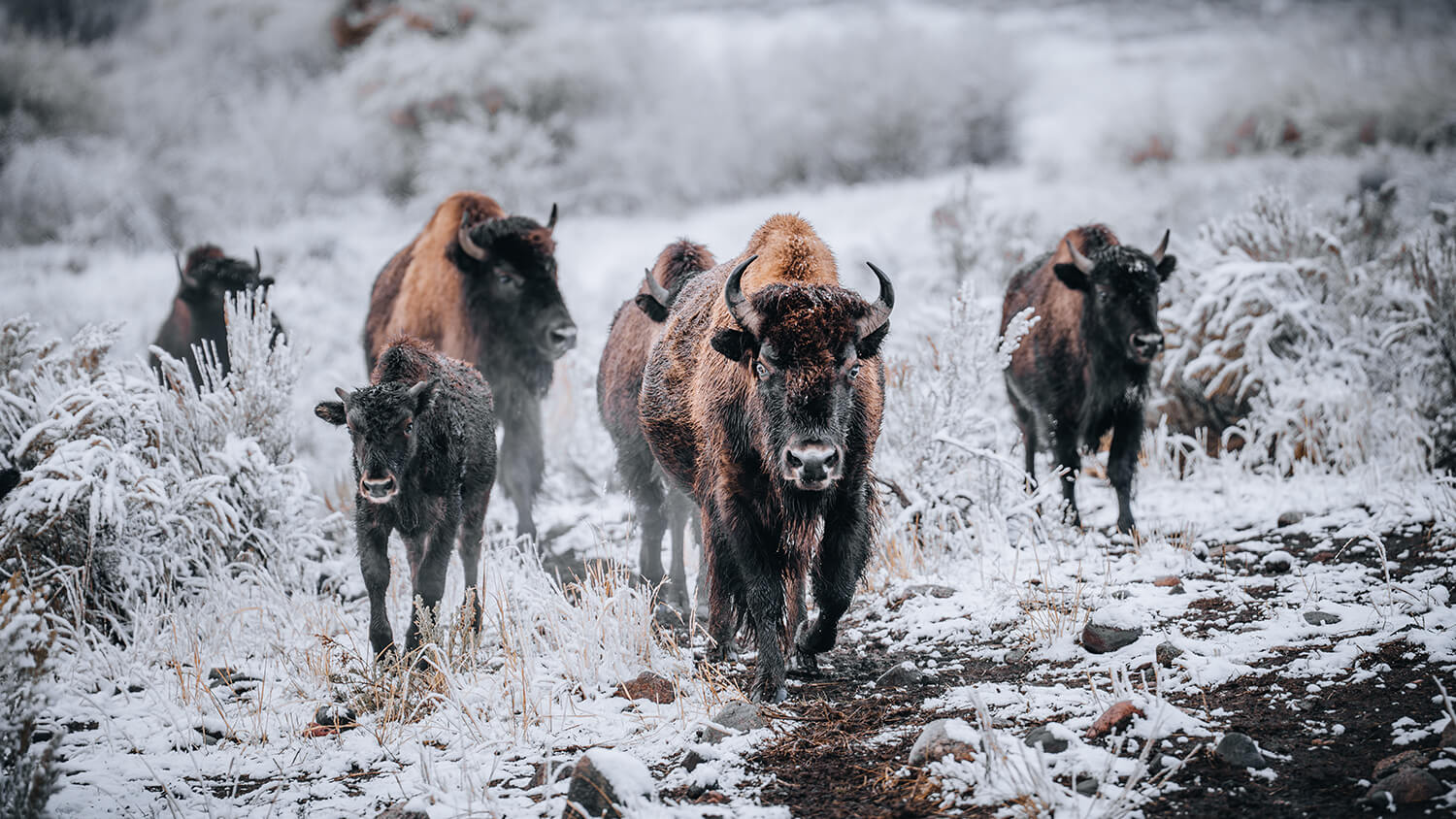
BISON, YELLOWSTONE NATIONAL PARK, US
Could you tell us the story behind one or two of your favorite images to date?
One of my favorite photos I have taken was during my time in Papua New Guinea [below]. I was staying with the Skeleton Tribe in Chimbu. They had just finished their performance, and a small group stayed for some more photos. It was their idea to lay in a circle on banana leaves as they have done before for a picture. I asked if I could position them differently and was granted permission to do so. Now turned on their side with arms and hands touching, a flower-like shaped appeared in their painted bones. Leaning in directly above them and using a wide-angle lens, I captured this image and feel it is best served in black and white.
Another is when I was in the Bwindi Impenetrable Forest of Uganda participating in Mountain Gorilla Habituation when we encountered a family [above]. In this forest, you must keep your clothing sealed to protect against aggressive insects and wear a mask to protect the gorillas from illness. We had a 2-hour intense hike to reach them, and the Silverback was a massive being. There are known ways to communicate with mountain gorillas in their language, and I vocalized a messaged to him. The Silverback calmly turned his head, acknowledged me, and returned to his skyward gaze. That is when I snapped this photo of him looking up into an ethereal beam of light penetrating the impenetrable forest. I wanted to capture the sentient emotions I felt and witnessed while among his family. Some moments and feelings never fade, and this is one of them.
Who or what inspires you, within the genre of photography or outside of it?
I find so much inspiration for photography within the community itself and the people I meet during my travels. I do also take inspiration from David Yarrow. His approach to storytelling and his physical presentation of the art are incredible. I also appreciate his continued focus on philanthropy.
What’s the best piece of advice you’d pass on to your younger self if you could?
The advice I would give my younger self is do not wait to put your art into the world. You may not think you are ready, but it’s the greatest thing you can do to progress yourself as a creative.
And finally, what’s next? What will you be working on for the rest of 2025?
I have some incredible journeys ahead of me that I cannot wait for. I am heading to India for a tiger safari and time in Varanasi for cultural portraits. While in the region I will be visiting Nepal and Bhutan as well. Beyond that I have a trips planned to Venice, Kenya, Tanzania, Greenland and Iceland. I am open to suggestions…

NATHANIEL’S FAVORITE SHOT, SKELETON TRIBE, CHIMBU, PAPUA NEW GUINEA

SKELETON TRIBESMAN, CHIMBU, PAPUA NEW GUINEA

SKELETON TRIBESMAN, CHIMBU, PAPUA NEW GUINEA
